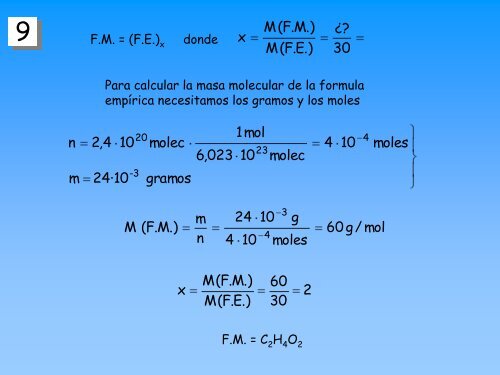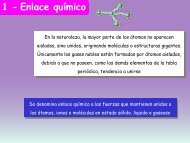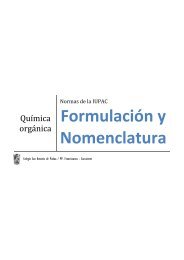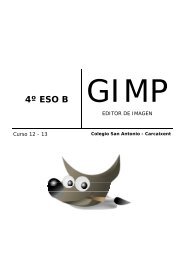En el caso del cobalto, al estar formado por un único isótopo, la ...
En el caso del cobalto, al estar formado por un único isótopo, la ...
En el caso del cobalto, al estar formado por un único isótopo, la ...
You also want an ePaper? Increase the reach of your titles
YUMPU automatically turns print PDFs into web optimized ePapers that Google loves.
9 F.M. = (F.E.) x donde<br />
n<br />
m<br />
2,<br />
4<br />
x<br />
M(<br />
F.<br />
M.)<br />
M(<br />
F.<br />
E.)<br />
¿?<br />
30<br />
Para c<strong>al</strong>cu<strong>la</strong>r <strong>la</strong> masa molecu<strong>la</strong>r de <strong>la</strong> formu<strong>la</strong><br />
empírica necesitamos los gramos y los moles<br />
10<br />
24·10<br />
-3<br />
M<br />
20<br />
molec<br />
gramos<br />
( F.<br />
M.)<br />
x<br />
6,<br />
023<br />
m<br />
n<br />
4<br />
1mol<br />
10<br />
24<br />
10<br />
M(<br />
F.<br />
M.)<br />
M(<br />
F.<br />
E.)<br />
23<br />
10<br />
4<br />
molec<br />
3<br />
g<br />
moles<br />
60<br />
30<br />
F.M. = C 2 H 4 O 2<br />
2<br />
4<br />
10<br />
4<br />
60 g/<br />
mol<br />
moles






